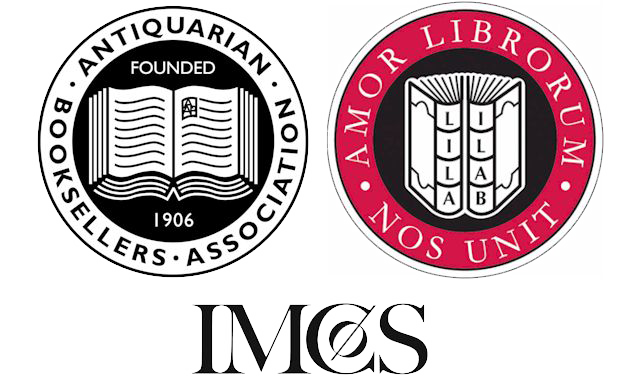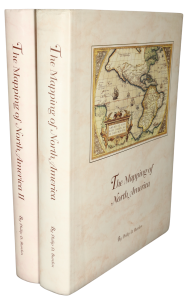Rare Maps and Prints
- World & Celestial
- North America
- West Indies, South & Central America
- British Isles
- British Isles
- English counties
- Large-scale
- Bedfordshire
- Berkshire
- Buckinghamshire
- Cambridgeshire
- Cheshire
- Cornwall
- Cumberland
- Derbyshire
- Devon
- Dorset
- Durham
- Essex
- Gloucestershire
- Hampshire
- Herefordshire
- Hertfordshire
- Huntingdonshire
- Islands
- Kent
- Lancashire
- Leicestershire
- Lincolnshire
- Middlesex
- Norfolk
- Northamptonshire
- Northumberland
- Nottinghamshire
- Oxfordshire
- Rutland
- Shropshire
- Somerset
- Staffordshire
- Suffolk
- Surrey
- Sussex
- Warwickshire
- Westmoreland
- Wiltshire
- Worcestershire
- Yorkshire
- Wales
- Scotland
- Ireland
- Western Europe
- Eastern Europe
- Middle East
- Africa
- Asia
- Australasia & Pacific
- Decorative Prints
- Title Pages
Mr. Philip D. Burden
P.O. Box 863,
Chalfont St. Giles, Bucks HP6 9HD,
UNITED KINGDOM
Tel: +44 (0) 1494 76 33 13
Email: enquiries@caburden.com
THIS EXTREMELY RARE MAP IS THE FIRST TO DEPICT HUDSON BAY. It is found in the first printed record of Henry Hudson’s fourth and final voyage. The career of Hessel Gerritsz, although apprenticed to Willem Jansz. (Blaeu), flourished before that of his master’s. Gerritsz became the official cartographer to the Dutch East India Company in 1617, and upon his death in 1632 this title passed to Blaeu.
Hudson had already made three accomplished voyages of discovery. The first two, in 1607 and 1608, were on behalf of the English Muscovy Company to find a possible North East Passage to China. The third, in the employ of the Dutch East India Company in 1609, led to the discovery of the river named after him. A group of English merchants employed him to follow up earlier attempts to find a North West Passage. Hudson had seen Captain George Weymouth’s journal recording that during his 1602 voyage he had briefly entered what was to be Hudson Strait. In April 1610 Hudson set sail in the Discovery, the same ship that carried Weymouth, and after reaching Greenland eventually worked his way into ‘a spacious sea’ and discovered Hudson Bay. Heading south along the eastern shore they wintered at the southernmost point of James Bay. After a bitter and cruel winter the melting ice finally freed the ship in early June and a few days later the crew mutinied. The crew set adrift Hudson, his son and seven others in a small open top boat. They were never heard of again.
We have to thank one Abacuck Prickett for the survival of a map. Only eight men made it back to England in September 1611; however none of them were ever punished. The map somehow made its way to Amsterdam where in 1612 Gerritsz published the first account of the voyage. The printed map records Hudson’s belief that he had found the Pacific Ocean with ‘MARE MAGNVM’. What at first glance looks like the western shore of Hudson Bay is in fact James Bay. It was in 1612 that this coast was traversed with the voyage of Thomas Button. The misconception of James Bay and its two large bays at the southern end would persist for decades to come. The second state with the two lines of text removed from 360 degree meridian. Provenance: private Canadian collection. Burden (1996-2007) 162; Kershaw (1993-98) pp. 56-8; Schilder (1990) pp. 200-1, figures 3.112 & 3.113 (illustrating the Dutch text on the reverse of the map); Verner & Stuart-Stubbs (1979) pp. 140-2 (incorrectly illustrating the de Bry version).
Hudson had already made three accomplished voyages of discovery. The first two, in 1607 and 1608, were on behalf of the English Muscovy Company to find a possible North East Passage to China. The third, in the employ of the Dutch East India Company in 1609, led to the discovery of the river named after him. A group of English merchants employed him to follow up earlier attempts to find a North West Passage. Hudson had seen Captain George Weymouth’s journal recording that during his 1602 voyage he had briefly entered what was to be Hudson Strait. In April 1610 Hudson set sail in the Discovery, the same ship that carried Weymouth, and after reaching Greenland eventually worked his way into ‘a spacious sea’ and discovered Hudson Bay. Heading south along the eastern shore they wintered at the southernmost point of James Bay. After a bitter and cruel winter the melting ice finally freed the ship in early June and a few days later the crew mutinied. The crew set adrift Hudson, his son and seven others in a small open top boat. They were never heard of again.
We have to thank one Abacuck Prickett for the survival of a map. Only eight men made it back to England in September 1611; however none of them were ever punished. The map somehow made its way to Amsterdam where in 1612 Gerritsz published the first account of the voyage. The printed map records Hudson’s belief that he had found the Pacific Ocean with ‘MARE MAGNVM’. What at first glance looks like the western shore of Hudson Bay is in fact James Bay. It was in 1612 that this coast was traversed with the voyage of Thomas Button. The misconception of James Bay and its two large bays at the southern end would persist for decades to come. The second state with the two lines of text removed from 360 degree meridian. Provenance: private Canadian collection. Burden (1996-2007) 162; Kershaw (1993-98) pp. 56-8; Schilder (1990) pp. 200-1, figures 3.112 & 3.113 (illustrating the Dutch text on the reverse of the map); Verner & Stuart-Stubbs (1979) pp. 140-2 (incorrectly illustrating the de Bry version).
GERRITSZ, Hessel
TABVLA NAVTICA, qua repræsentantur oræ maritimæ, meatus, ac freta, noviter a H Hudsono Anglo ad Caurum supra Novam Franciam/ indagata Anno 1612
Amsterdam, 1612
240 x 520 mm., in superb condition.
Stock number: 3831
SOLD






